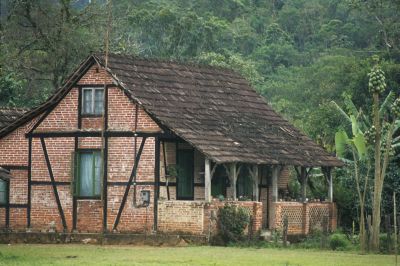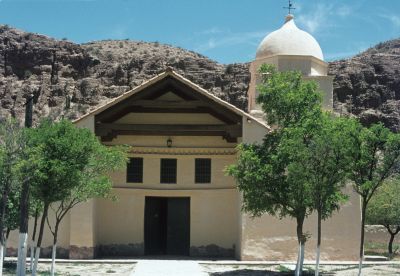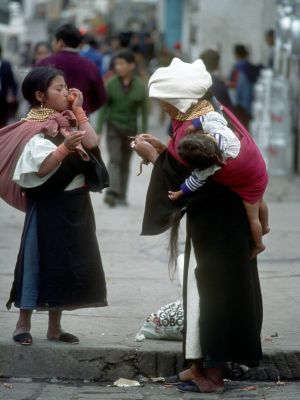| home | site map | world | children | recent | cooking | dutch | german | react | ||||||||||||
South and North-America 1 (1973/74).

Brazil: German construction style in a tropical setting reflects their origin of 150 years ago
R
io de Janeiro was our landingplace in our next continent from where we first went south to see more of it. Brasil, supposed to be a hot country, offered us only cold and wet weather. We had to flee to dirt roads through tropical mountains, as the paved roads were full of the most dangerous traffic we ever encountered before.Uruguay, no need for escaping traffic, the newest car was of the thirties and did not go much faster than we did. A tranquil place of horseriding gauchos (cowboys) and schoolchildren. Only the police disturbed us often to check passport and search luggage, probably thinking we were cycling Tupamaros, a town-guerilla who were thrown out of Chili at that time. People were afraid of the Tupamaros too.
While camping near a small farm, Henny went asking for water and was received with a gun through a door ajar. Seeing who he was, the farmer apologized: "you see, with all these Tupamaros around". Later on he brought eggs and milk to our tent and stayed for a chat.
Argentina's pampas were easy: flat and good roads, we moved fast, then one moment of no attention, a big hole in the pavement and my rear wheel had had it, deformed to the shape of a heart. We carried the bike back to the nearest village and found a bike repairshop. The afternoon, evening and next morning were spent in reshaping and respoking. We slept in the workshop, shared the family's meals and no repairbill was presented. This happened a few times for other repairs as well.

Argentina: The Andean architecture fits well in its environment

Ecuador: Otavalo's have very successful in markting their own products
As the crow flies many villages were only 20 miles apart, but a huge mountain range was often in between making the distance five times longer and taking us two days of riding; downhill the same speed as uphill, because of the bad, stony roads. Every valley had different Indians, distinguished by beautiful homespun and woven clothing. The high part of Bolivia and Peru once was the empire of the Inca, where many sturdy stone buildings reminded us about them.
The highest point on our travels on bicycle we reached in Peru, climbing in a snowstorm and ending at the snow covered 16.143 feet pass.
Ecuador and Colombia had lower mountains but lower valleys too, so the climbs remained the same. The Colombians very proud of their coffee, offered us many times a free cup of it.
| Site map (nl) | Around the world | Previous | Next page | |||